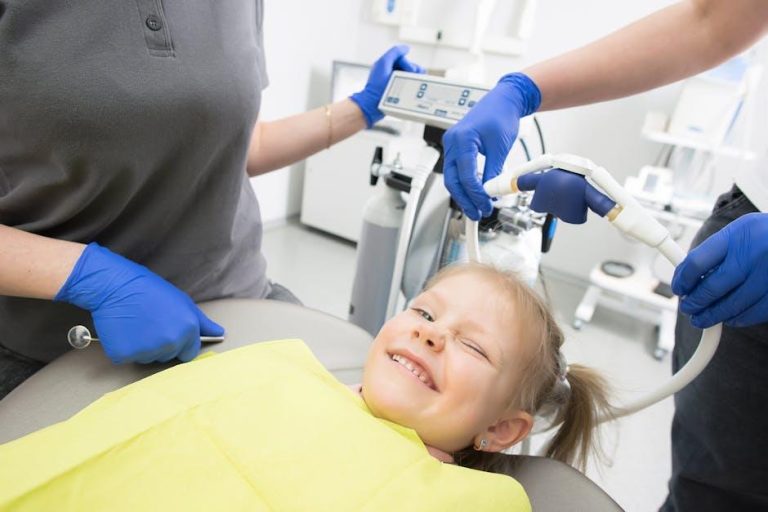1 in 3 Kids Has Dental Problems, Poll Finds – U.S. News & World Report
According to a recent U.S. News & World Report poll, one in three children in the United States suffers from dental problems. This concerning statistic sheds light on the ongoing challenges in pediatric oral health care and underscores the importance of early intervention and preventive practices. In this article, we’ll explore the causes, consequences, and practical solutions to combat dental problems among children, helping parents and caregivers ensure their kids maintain healthy smiles.
Understanding the Scope: What Does “Dental Problems” Mean?
The term “dental problems” in children encompasses a variety of oral health issues including tooth decay, cavities, gum disease (gingivitis), tooth sensitivity, and even misalignment or trauma. Of these, the most prevalent condition is dental caries (tooth decay), which remains the primary chronic childhood disease.
Key Statistics from the Poll
| Dental Issue | Percentage of Kids Affected |
|---|---|
| Tooth Decay / Cavities | 28% |
| Gum Disease (Gingivitis) | 10% |
| Tooth Sensitivity | 7% |
| Others (Misalignment, Trauma) | 5% |
Why Are So Many Children Facing Dental Issues?
Several factors contribute to the high incidence of dental problems in children:
- Poor Oral Hygiene: Many children do not brush or floss regularly or correctly, allowing harmful bacteria to accumulate.
- Diet High in Sugars and Acidic Foods: Excessive consumption of candy, soda, and sugary snacks accelerates tooth decay.
- Lack of Regular Dental Visits: Some families face barriers such as cost, lack of nearby providers, or low prioritization of dental health.
- Socioeconomic Factors: Children from low-income families have higher rates of untreated dental problems due to limited access to care and education.
- Fluoride Deficiency: Inadequate exposure to fluoride, which helps strengthen tooth enamel, can increase susceptibility to cavities.
Health Consequences of Untreated Dental Problems
Ignoring dental issues in children can lead to severe consequences both medically and socially. Common complications include:
- Severe Pain and Infection: Untreated cavities can cause painful abscesses that may require emergency treatment or antibiotics.
- Difficulty Eating and Speaking: Oral pain and tooth loss impact nutrition and speech development.
- Impact on School Performance: Chronic dental pain and infections can lead to missed school days and reduced concentration.
- Low Self-Esteem: Visible oral problems can affect a child’s confidence and social interactions.
Practical Tips to Protect Your Child’s Dental Health
Parents and caregivers play a vital role in preventing dental problems. Below are expert-recommended strategies:
- Start Oral Hygiene Early: Clean your child’s gums with a soft cloth even before teeth appear. Once teeth come in, brush twice daily with a child-friendly fluoride toothpaste.
- Supervise Brushing and Flossing: Help children brush properly until they develop good manual dexterity, usually by age 7-8.
- Limit Sugary Snacks and Drinks: Encourage a balanced diet rich in fruits, vegetables, and calcium. Replace sugary beverages with water or milk.
- Schedule Regular Dental Checkups: Take your child to the dentist every six months for professional cleanings and early detection of issues.
- Consider Dental Sealants and Fluoride Treatments: Discuss preventive dental procedures with your dentist that can protect your child’s teeth.
- Be a Role Model: Demonstrate good oral care habits yourself to inspire your children.
Case Study: Turning Around a Child’s Dental Health
Meet Sarah, an 8-year-old who was struggling with frequent tooth decay. Her parents noticed she often complained of tooth pain and avoided brushing. After a dental evaluation, Sarah received treatment for multiple cavities and was enrolled in a preventive care program. Her parents learned how to supervise brushing, limit sugary snacks, and schedule consistent dental visits.
Within six months, Sarah showed remarkable improvement: no new cavities, better brushing habits, and increased enthusiasm about dental care. This case highlights the importance of education, early intervention, and family support in combating pediatric dental problems.
Benefits of Good Oral Health for Children
Maintaining healthy teeth and gums has wide-ranging benefits for children, including:
- Enhanced confidence and self-esteem through a bright smile.
- Improved overall health since untreated dental infections can affect the body.
- Better academic performance due to fewer dental-related absences and discomfort.
- Formation of lifelong healthy habits that decrease adult dental disease risk.
Summary Table: Preventive Practices at a Glance
| Preventive Practice | Recommended Frequency | Benefits |
|---|---|---|
| Brushing with Fluoride Toothpaste | Twice daily | Removes plaque, strengthens enamel |
| Flossing | Once daily | Reduces gum inflammation and cavities |
| Dental Checkups | Every 6 months | Early detection and treatment |
| Limiting Sugary Snacks | Daily moderation | Decreases cavity risk |
| Using Dental Sealants (if advised) | As recommended | Protects molars from decay |
Final Thoughts: Taking Action Now for Healthier Smiles
With a stunning statistic revealing that 1 in 3 kids in the U.S. has dental problems, it’s clear that pediatric oral health deserves greater attention. The good news is that many dental issues are preventable through simple, consistent care and lifestyle choices. Parents, caregivers, schools, and healthcare providers must collaborate to educate, support, and provide accessible dental services to children nationwide.
By taking proactive steps today, you can protect your child’s smile and overall well-being—ensuring they grow up happy, healthy, and confident. Remember, healthy teeth aren’t just about appearances; they’re the foundation for a thriving future.


